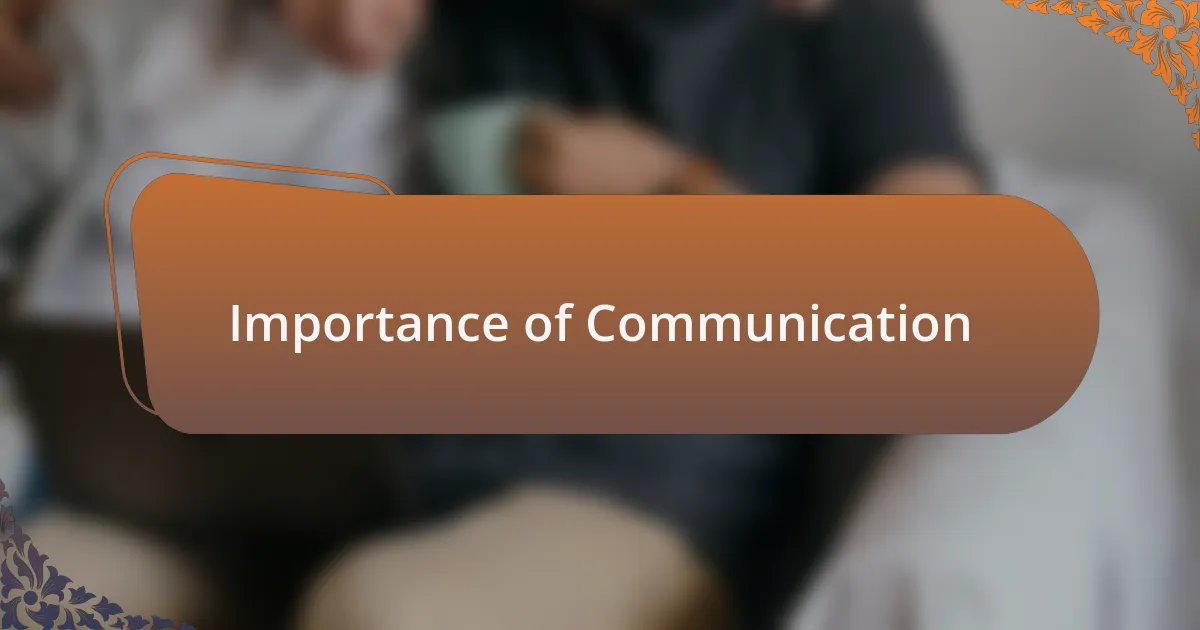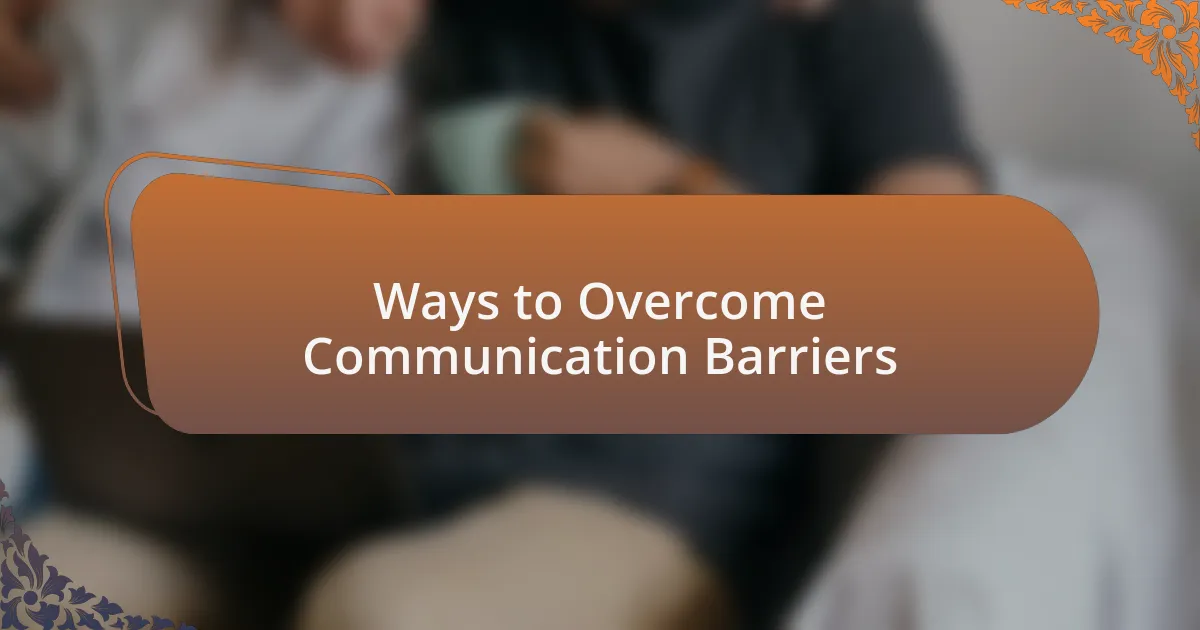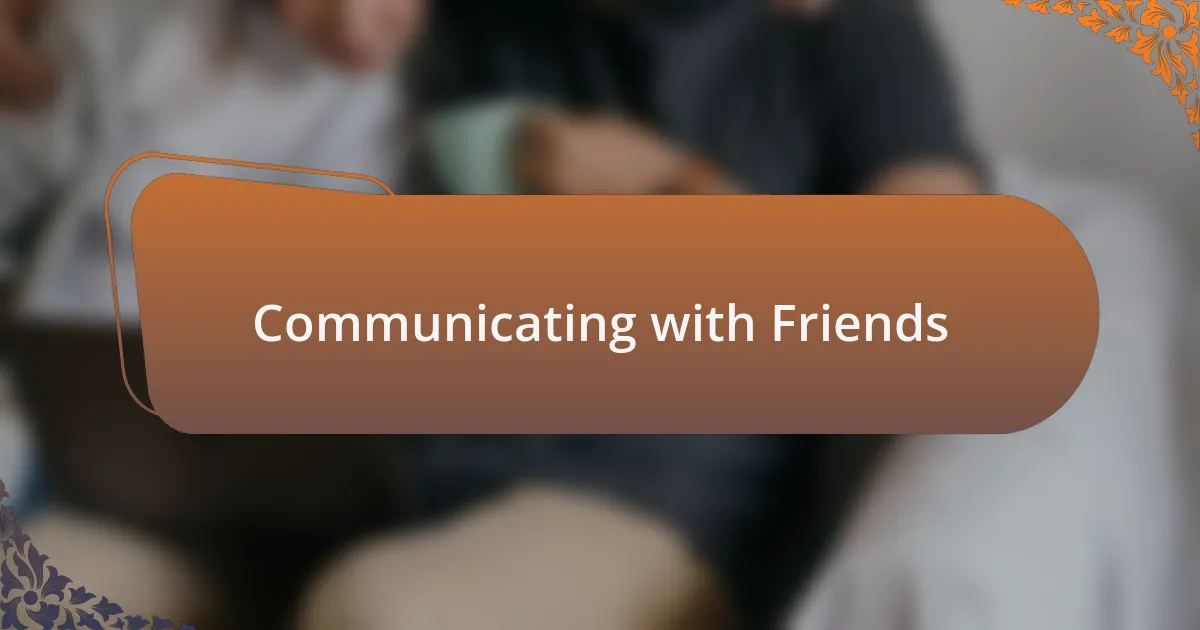Key takeaways:
- Selective mutism is an anxiety disorder preventing children from speaking in specific social situations, leading to emotional turmoil and isolation.
- Effective communication strategies include using non-verbal cues, creating safe environments, and practicing open-ended questions to ease anxiety and foster dialogue.
- Supporting friends with selective mutism involves being patient, valuing their silence, and recognizing their unique communication styles.

Understanding Selective Mutism
Selective mutism is a complex anxiety disorder primarily affecting children, where they struggle to speak in specific social situations despite speaking comfortably at home. I remember how perplexed it was to see my friend, who was vivacious and chatty around family, suddenly go silent at school, leaving those around her confused. Have you ever witnessed someone in a similar position, feeling trapped by their own anxiety?
Despite its name, selective mutism isn’t simply a refusal to speak; it stems from a deep-rooted fear of judgment or misinterpretation in social interactions. I’ve come to realize that this condition isn’t just about silence; it’s about the emotional turmoil that accompanies it. Can you imagine the frustration they must feel, wanting to engage yet feeling paralyzed by those very expectations?
Understanding selective mutism requires empathy and patience. For those living with it, the fear of communication feels immense, as if each word carries a weight that can tip them over. I’ve often thought about what it would be like to navigate a world where speaking is a source of anxiety rather than a natural expression. What would you do, if faced with such a challenge?

Effects of Selective Mutism
Experiencing selective mutism can profoundly impact a child’s social life and development. I recall a time when one of my friends hesitated to join a group activity, silently sitting on the sidelines while other kids laughed and played. It struck me how isolating this could be; have you ever felt that kind of separation even in a crowd?
The emotional effects are just as significant as the social ones. A child grappling with this condition might feel persistent anxiety, leading to low self-esteem over time. I’ve seen kids avoid new friendships and opportunities because they fear speaking, which makes me wonder how many potential connections they miss out on.
Moreover, the struggle with communication can extend into adulthood, shaping how individuals build relationships and express their thoughts. I’ve met adults who still carry the remnants of such anxiety, often apologizing for their silence in group settings. Isn’t it heartbreaking to think about the burdens we sometimes carry from childhood into our adult lives?

Importance of Communication
Communication plays a vital role in nurturing friendships and building connections. I remember a time when a simple text from a friend brightened my day. Just knowing someone cared enough to reach out meant the world to me. Have you ever realized how a few shared words can create an entire bridge between two people?
When children, especially those experiencing selective mutism, struggle to express themselves, it can lead to a sense of isolation. I’ve seen firsthand how my friend would nod or smile instead of speaking during conversations, which made me want to include them even more. It’s tough to watch someone stay quiet when all they might need is a little encouragement to share their thoughts.
In sharing our experiences, we not only convey our feelings but also validate each other’s existence. I cherish the moments when I finally found the courage to voice my thoughts, feeling a rush of relief afterward. How often do we underestimate the power of our voices? Sharing those small moments of connection can really make a difference in someone else’s life.

Strategies for Effective Communication
One effective strategy I found helpful is using non-verbal cues to communicate. I once had a friend who struggled to find the right words, so we established a system of gestures and facial expressions instead. This made our interactions more meaningful and less pressure-filled, allowing them to feel included without the anxiety of speaking.
Another approach that worked wonders is creating a safe environment for my friends to express themselves. I remember hosting small gatherings where we’d share stories and experiences casually. I noticed that when the atmosphere is relaxed and accepting, my friends felt more comfortable, and the conversations flowed freely, even from those who usually kept quiet.
In addition, I advocate for practicing open-ended questions during discussions. Rather than asking, “Did you have a good day?” I shifted to “What was the highlight of your day?” This simple adjustment invites deeper dialogue and encourages my friends to share more of their thoughts. Have you tried transforming your questions? I think it can open up whole new avenues for communication that we often overlook.

Ways to Overcome Communication Barriers
One helpful method I discovered is the use of visual aids to bridge communication gaps. I once created a shared digital board with images and words that represented different feelings, preferences, or experiences. This way, my friends could express themselves through visuals, which often felt less daunting than speaking and sparked some unexpected and lively conversations.
Another technique that proved invaluable is setting aside time specifically for one-on-one interactions. I remember scheduling weekend coffee chats with a friend who often found group settings overwhelming. This focused attention allowed them to share their thoughts without the pressure of an audience, and I could see their confidence grow as they opened up more comfortably during our talks. Have you tried dedicating time just to listen? It can make all the difference.
Additionally, incorporating activities that promote collaboration can naturally ease communication barriers. While playing board games with a group of friends, I noticed that teamwork encouraged everyone to vocalize their strategies and ideas. The laughter and shared fun created an organic connection, making it easier for those who typically resist conversation to engage. Isn’t it fascinating how some activities can facilitate dialogue without even trying?

Communicating with Friends
When I communicate with friends, I often lean on non-verbal cues to express my feelings. For instance, I once had a friend who had difficulty voicing their concerns in stressful situations. I found that by using body language and facial expressions, we could share a deeper connection; a simple nod or comforting smile can convey a lot when words fall short. Isn’t it powerful to realize that sometimes, silence speaks more than speech?
In my experience, creating a safe space for open dialogue is crucial. I remember hosting a small get-together where I encouraged everyone to share their thoughts without judgment. The calm environment allowed a friend who typically struggled to articulate feelings to finally express personal frustrations that had been weighing them down. How often do we provide that level of support to those around us?
I also discovered that shared experiences can simplify communication. During a recent hiking trip, I noticed how the beauty of nature prompted easy conversations among my friends. We talked freely about our lives while navigating the trails, and it felt as though the surroundings inspired not just talking, but genuine connection too. Have you noticed how a change of scenery can often unlock new levels of interaction?

Tips for Supporting Mutism Friends
Supporting friends with selective mutism requires an understanding approach that values their silence. I recall a moment when I went to a café with a friend who often struggled to speak in public settings. Instead of pressuring them to talk, I simply enjoyed our time together, allowing them to engage at their own pace. It’s fascinating how creating that relaxed atmosphere helped them feel more comfortable, showing that just being present can make a huge difference.
Another helpful tip is to be attentive to their unique communication style. I remember a friend who would often write down their thoughts instead of speaking them aloud. By actively reading and responding to their written messages, I made our conversations feel more natural and less intimidating. Have you ever considered how meeting someone where they are can strengthen your bond?
Lastly, patience is key. There was a time when I attended an event with a friend who needed moments of silence amidst the crowd. Instead of filling every pause with chatter, I learned to appreciate those quiet moments, which let them relax and gather the courage to engage when ready. What if we all took the time to observe and adapt to what our friends need? It could lead to richer and more meaningful connections.